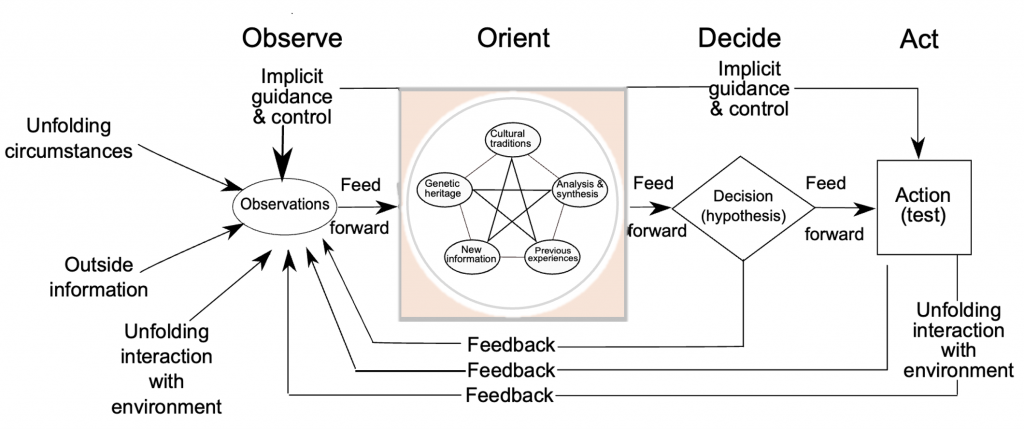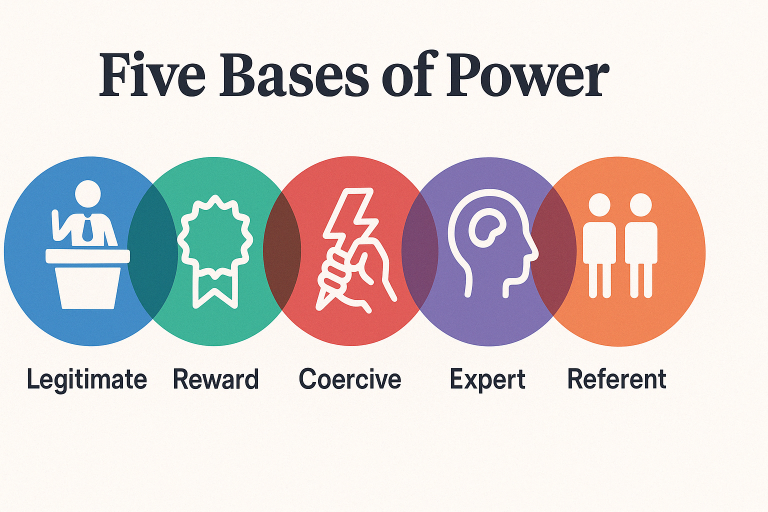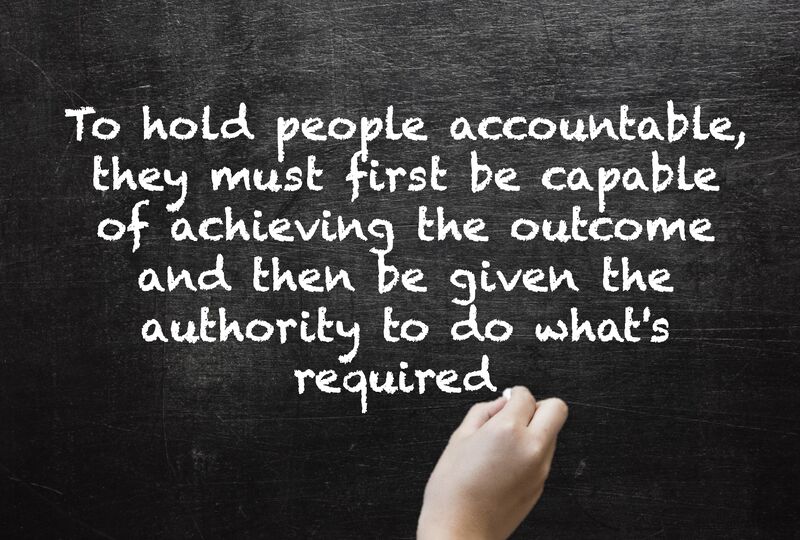It’s Hard to Soar Like an Eagle

We’ve all heard the saying:
“It’s hard to soar like an eagle when you’re surrounded by turkeys.”
Any driven, disciplined professional knows what that feels like. You set high standards for yourself, you take ownership of outcomes, and you move quickly and decisively.
The High Performer’s Dilemma
High performers tend to have what psychologist Julian B. Rotter called an internal locus of control. You believe your actions directly influence outcomes, so you take responsibility, plan ahead, and put in the hard work.
Unfortunately, not everyone operates this way. Many people exhibit an external locus of control, believing that success or failure is largely down to luck, other people, or circumstances beyond their influence. When a strong internal-locus performer is surrounded by those with an external locus, or worse, by people who actively undermine their efforts, it creates tension and frustration.
Unresponsive colleagues, managers, prospects, and clients are especially challenging. Non-response is not just inefficient, when it’s deliberate or coupled with gaslighting behaviour (“I never got that email,” “You never raised that with me,” or simply ignoring you altogether), it can feel manipulative and demoralising. It’s one of the most frustrating challenges for someone who thrives on clarity, accountability, and progress.
So, if you’re dealing with a boss, client, or prospect who ignores your attempts to communicate, undermines your credibility, or denies your contributions, you’re not just experiencing poor management and/or performance, you’re confronting behaviour that runs counter to every principle of good leadership and professionalism.
10 Strategies to Elevate Others and Gain Traction
Here are 10 practical ways to garner higher performance from underperformers and to gain traction with those who seem unresponsive.
1. Document Everything
One of the simplest but most powerful habits you can develop in a frustrating environment is diligent documentation. Keep clear, concise written records of all key interactions. Whether it’s an email confirming a phone call, meeting minutes capturing what was agreed, or a project log tracking milestones and actions. This doesn’t mean sending long, legalistic emails after every chat; even short, polite summaries like “As discussed, I’ll proceed with X by Friday unless I hear otherwise” can create clarity and accountability.
When you work with people who are unresponsive or who later deny conversations, documentation protects you. It provides a clear timeline and evidence that you’ve done your part, and it makes it harder for others to claim ignorance. Particularly if your boss engages in gaslighting (denying agreements or ignoring your input and later blaming you), documentation is your safety net.
It also has a positive side. It helps keep you on track. High performers are usually managing many tasks and relationships simultaneously, so keeping a written record keeps you focused and ensures nothing slips through the cracks. It’s a discipline that both protects you and improves your own performance.
2. Clarify Expectations Up Front
Poor performance often starts with poor clarity. People rarely hit a target they don’t fully understand. Whenever you delegate, request, or coordinate work, be explicit about the standard required, the deadline, and the deliverable. Avoid vague statements like “Get this to me soon”, instead say, “Please email me the completed report, including all supporting charts, by noon Friday.”
This applies to bosses and clients as well. If you’re relying on input from them, spell out what you need and what the implications are if it doesn’t arrive. For example: “We’ll need your signed approval by Wednesday to maintain the project timeline; if it slips, we may incur additional costs.” Clarity puts the responsibility squarely in their hands and makes it harder for them to later blame you for delays.
Clarity also gives you a reference point when following up. Instead of being apologetic for chasing, you can simply say: “Just checking in; you’d agreed to provide X by today.” It keeps the conversation factual, professional, and forward-looking.
3. Model the Standard
You can’t reasonably expect others to maintain high standards if you don’t demonstrate them yourself. People notice consistency, and it’s often the most effective way to influence those around you. Show up prepared. Deliver work to a high standard. Meet or beat deadlines. Communicate clearly and courteously.
When you consistently model excellence, you send a quiet but strong message about what’s expected. Over time, people may feel pressure, in a positive way to match your level of professionalism. Even those who don’t fully match it will often improve slightly when they see what “good” looks like.
It also protects your own integrity. In a low-performance environment, it’s tempting to lower your standards to fit in or to stop caring. But that rarely ends well. It damages your reputation and undermines your own sense of self. Model the behaviour you want to see, even when it feels like nobody else notices, because eventually, they will.
4. Coach Them to Take Ownership
Some people don’t act because they feel powerless. They assume decisions are someone else’s responsibility, or they don’t see how their actions make a difference. If you’re dealing with people like this, you can help by coaching them to take ownership. Ask open-ended, action-oriented questions like: “What’s the next step you can take on this?” or “What do you need from me to move this forward?”
These questions do two things. First, they help people focus on what’s within their control, even if it’s just one small action. Second, they signal your expectation that they’re responsible for progress, not you. You’re not taking their problem off their hands, but you are guiding them toward a solution.
This kind of coaching takes patience, but over time it can shift the culture around you. You may not convert everyone into high performers, but you’ll often see a marked improvement from those who simply needed someone to push them in the right direction.
5. Introduce Accountability Mechanisms
People generally perform better when they know their progress (or lack of it) is visible. You can build simple, effective accountability mechanisms into your workflow to keep everyone honest. Regular status meetings, shared dashboards, or even a simple shared checklist can make a big difference.
For colleagues, this helps them see how their contributions (or delays) affect the wider team. For unresponsive bosses or clients, you can politely refer to agreed timelines and commitments in your updates: “As per our discussion last week, the next step is for you to sign off by Thursday so we can proceed.” Making their responsibility visible creates pressure without being confrontational.
Accountability mechanisms also protect you when things inevitably go wrong. If everyone can see that you’ve kept your commitments and tracked theirs, there’s little room for unfair blame-shifting.
6. Understand What Drives Them
Motivation isn’t universal. People don’t all care about what you care about, and that’s okay. The key is to find out what does matter to them and frame your interactions accordingly.
For example, some people care about recognition, so pointing out how their work will be acknowledged can spark action. Others care about avoiding risk, so framing delays as a risk can motivate them. Clients often care about cost and schedule, so you can tie your requests to those priorities: “If we don’t get your input by Wednesday, it’s likely to increase the cost by 10%.”
Understanding what motivates someone allows you to speak their language. Rather than trying to impose your priorities, you align yours with theirs, and you’re far more likely to get results.
7. Stay Focused on What You Can Control
It’s easy to get frustrated by others’ shortcomings, but dwelling on what you can’t change only makes you bitter. A hallmark of an internal locus of control is staying focused on what you can influence.
That means maintaining your own professionalism, no matter what others do. It means identifying what progress you can make independently while waiting for others. And it means not letting yourself be dragged down into the mediocrity around you.
This isn’t about being a martyr or pretending things are fine, it’s about protecting your own standards and reputation while you work on improving the situation.
8. Use Deadlines to Create Urgency
Few things focus attention like a real deadline. If you find people are dragging their feet, communicate clearly what needs to happen by when, and what the consequences of delay are.
This works particularly well with unresponsive clients or bosses: “If I don’t hear back by close of business Wednesday, I’ll proceed with Option A as discussed.” This kind of polite firmness can often prompt action where endless chasing doesn’t.
Deadlines give you a reference point for escalation too. Once a reasonable deadline passes, you’re justified in pushing harder or escalating the issue, because you’ve already set expectations.
9. Give Feedback and Seek It
Poor performers or unresponsive people often don’t realise how their behaviour is perceived. Don’t be afraid to give calm, constructive feedback: “When you don’t respond to emails about this, it delays the whole project and adds pressure to the team.”
This kind of feedback is best delivered privately, respectfully, and with a focus on solutions: “What can we change to help you respond sooner?” You’ll often find people appreciate the clarity, even if they don’t say so immediately.
Equally important: ask for feedback yourself. It signals that you’re open to improvement and helps you uncover any blind spots in how you come across. It also reinforces a culture of accountability, rather than one where blame only flows in one direction.
10. Know When to Escalate or Walk Away
Sometimes, despite your best efforts, nothing changes. At that point, it’s important to protect yourself and the business by escalating through the proper channels.
If a boss is gaslighting you, if a client is continually obstructive, or if a colleague is actively harming progress, raise it with a senior manager or HR. The amended WHS Act obliges employers to manage psychosocial hazards like gaslighting, and raising the issue formally protects both you and others.
And sometimes, the most professional choice you can make is to disengage. If you’ve exhausted reasonable avenues and nothing improves, it may be time to remove yourself from the relationship or even the workplace. High performers have options, and you should never feel you have to stay in an environment that consistently undermines your efforts.
These strategies provide not just a toolkit for navigating difficult environments, but also a mindset: stay professional, stay proactive, and don’t compromise your own standards for anyone else’s convenience. That’s how you keep soaring, even when others are happy to waddle.







